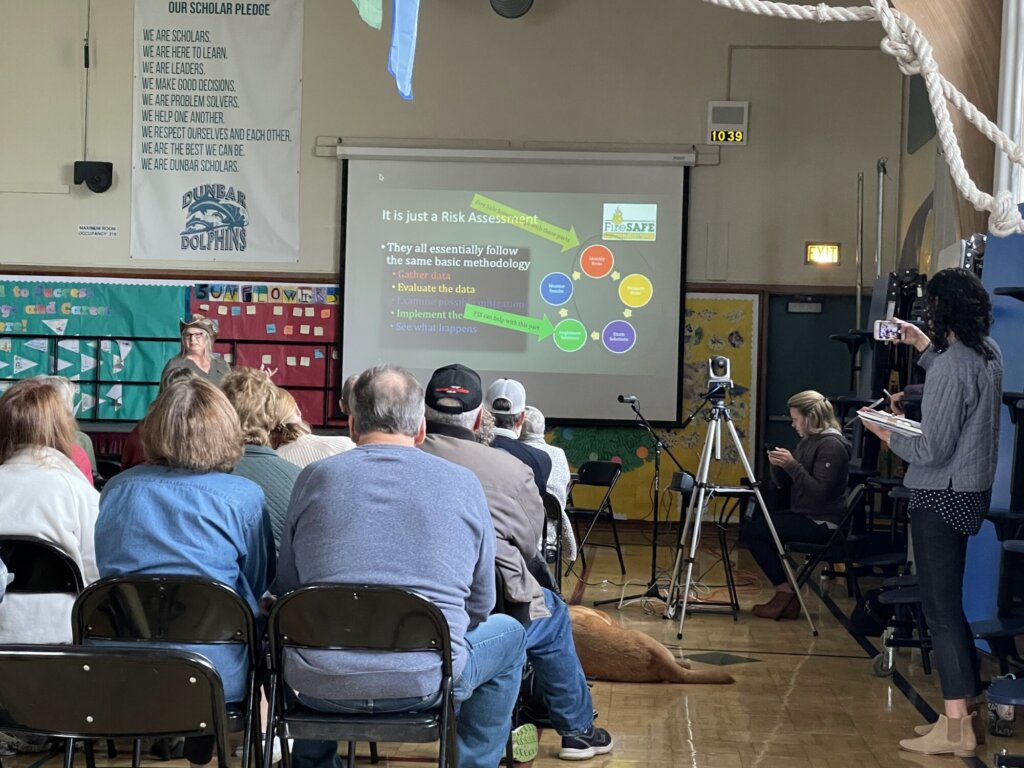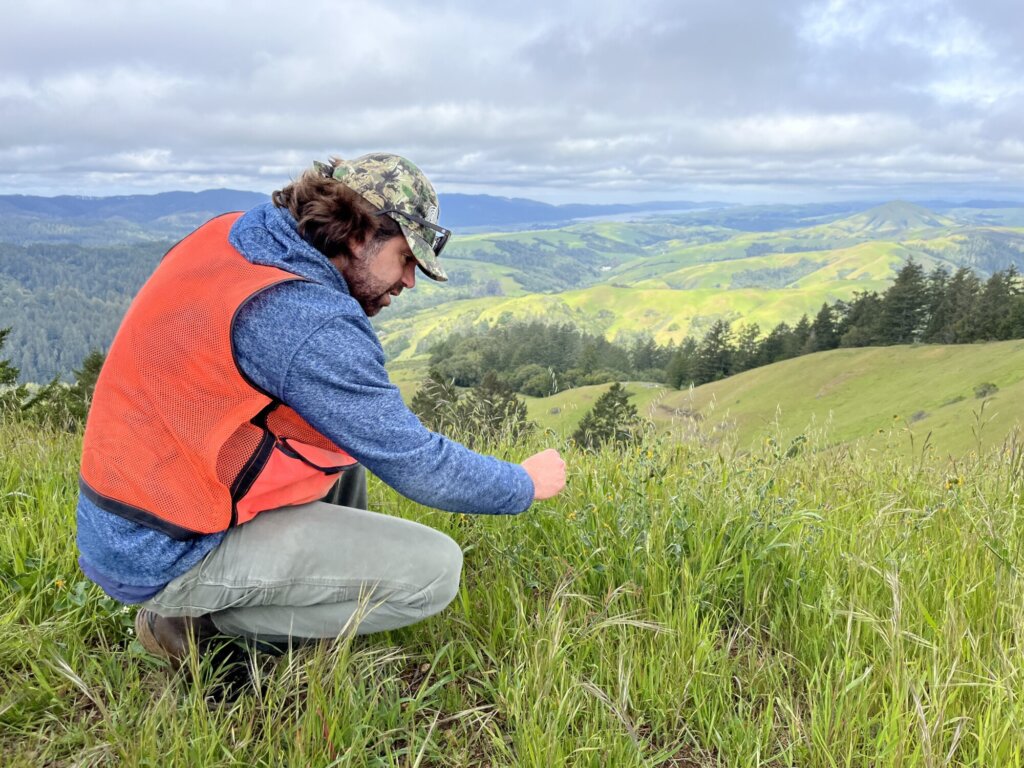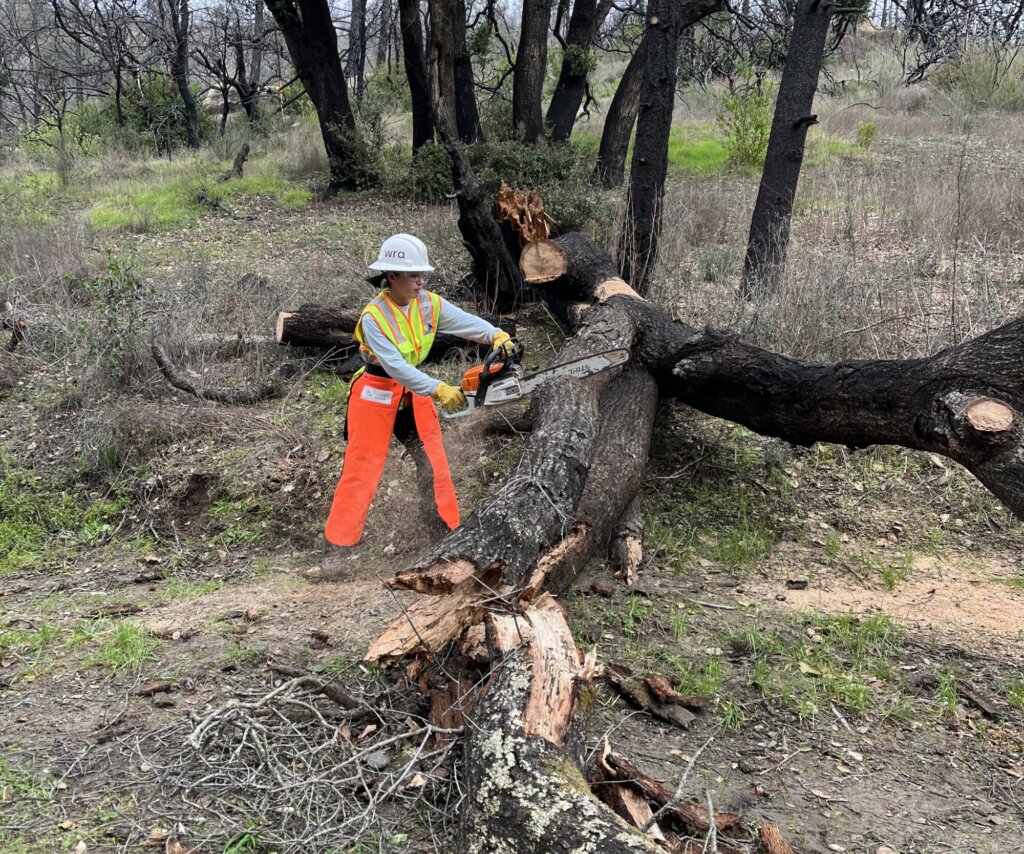Lifecycle of a Fuel Treatment Project
Large wildfires have become a common occurrence throughout the landscapes and communities of the American West and are here to stay whether we like them to or not. The prevailing attitudes towards wildfires have shifted over the last ten years from outright prevention to adaptation and coexistence with these disruptive and destructive events. The National Cohesive Wildland Fire Management Strategy (NCWFMS), a comprehensive framework developed by United States Department of Agriculture (USDA) and United States Department of Interior (USDI) in 2014, marked a significant turning point in the federal government’s approach to wildfire adaptation with the framework’s strategy to collaborate among all stakeholders and across all landscapes, using best science, to make meaningful progress towards the three goals: 1) Resilient Forests; 2) Fire Adapted Communities; and 3) Safe and Effective Wildfire Response.
Fuel treatment and vegetation management projects, when thoughtfully planned and implemented, are an effective way for communities to work towards all three of these goals. Fuel reduction in the Wildland Urban Interface (WUI) can improve forest health and ecologic function, increase defensible space for structures, and improve fire response effectiveness when performed with the involvement of local fire departments, fire protection districts, local firewise and fire safe councils, community based organizations, special districts, and city and county governments.
Fuel treatment and vegetation management projects appear to be relatively simple, if effort intensive, at a quick glance – using a variety of methods such as prescribed burning, mechanical thinning, vegetation removal, and strategic placement of firebreaks to reduce the fuel available to wildfires. However, in order to be truly effective, these projects (specifically in California) require a number of additional steps. WRA has assisted a number of clients with the full lifecycle of project support including funding, planning, surveys and compliance, and implementation of fuel treatment projects and see these steps as critical to meeting NCWFMS three resiliency goals moving forward.
Funding: How can you find the money to cover the cost of your project?
Public grant opportunities can be a common means to cover the costs required for these important projects to take place. For the most recent CAL FIRE Wildfire Prevention grant proposal cycle, WRA’s Community Resilience team led the technical writing, data and mapping coordination, and program design and development for Berkeley Fire Department to fund an innovative vegetation reduction resident funding assistance program. This program will allocate small amounts of money to property owners located in Berkeley Hills’ Very High Fire Hazard Severity Zone (VHFHSV) with demonstrated financial hardship (criteria WRA developed for the purposes of the grant and program aligned with City of Berkeley vetted criteria) to help cover the costs of vegetation reduction treatments on their property.
In addition, WRA led the technical writing and data and mapping coordination required to help Napa County submit four separate FEMA Hazard Mitigation Grant Program applications, totalling approximately $30 million, for post-fire recovery programs following the catastrophic wildfires of 2017 and 2020.
Planning: How can you prioritize the necessary steps for implementing your project?
WRA recently partnered with the Novato Fire Protection District (NFPD) to assist with planning a fuel treatment project aimed at reducing fuel on city-owned open space. Additionally, the NFPD wanted to prioritize areas that were adjacent to HOA-maintained open space to engage the community on the project and provide additional defensible space to these areas. WRA developed a web-based, GIS mapping tool that was used by NFPD staff to identify parcels with high potential for fuel treatment. The tool allows users to interact with a number of GIS layers including City-owned open space, HOA parcels, potential sensitive natural resources, wildfire risk, and topography. Using this tool, three distinct fuel treatment project areas were identified for a combined total of 285 acres.
Surveys and Compliance: How can you make sure you are meeting the requirements of all relevant laws and regulations triggered by this project?
It is important to have a biologist familiar with local habitats and resources conduct field surveys to ensure that projects do not impact sensitive and protected natural resources that may be present. These surveys can also identify habitats and ecosystems that may benefit ecologically from specific fuel treatment types. Some examples of how we are supporting clients include: performing a site tree survey and creating vegetation mapping to develop a fuels management plan for Eden Housing in Alameda County; assisting with obtaining tree removal permits from the City of Hayward and addressing comments on the City’s landscaping plans; and conducting biological resource surveys to assist NFPD and the Marin County Fire Department with planning and compliance for multiple fuel treatment projects.
Implementation: You have secured funds and have your plans in place – now what?
WRA Landscape Restoration planned and conducted a 20-acre shaded fuel break for a privately owned post-fire site on the Napa/Sonoma Mayacamas Ridge. Work included removing dead-standing material and selectively thinning vegetation to decrease the threat of flammability for areas surrounding structures and ingress egress routes. In addition to the fuel work, the team is also controlling emergent invasive species populations and replanting 300 native hardwood trees to help provide aesthetic appeal and habitat while creating a more fire-resilient landscape.
WRA is currently working with private landowners and public partners, including Marin and Sonoma counties, on similar fuel treatment projects. We look forward to partnering on other projects to further help our communities wildfire-resilient.
Contact Us – We’re Here to Help!
Here is what we know to be true: Global climate change is apparent and is projected to continue into the foreseeable future, evident in the wildfire impact that poses increasing challenges to ecosystem and socioeconomic health over many geographic scales. We also know that there is a substantial amount of public funding available at the federal, state, and local levels to support projects to strengthen communities in becoming more resilient to a changing climate. The present government grant landscape is fairly complex, including long-standing programs, some with modified criteria and priorities as well as completely new appropriations, programs, and partnerships. WRA recognizes that communities sometimes need assistance accessing these grants and administering them upon award. Furthermore, implementation of grant projects may require the planning, technical, and/or implementation expertise and skill sets of qualified environmental consultants and contractors.
We support 501(c)(3) organizations, local governments, private landowners, and special districts cultivate grant funding opportunities, manage grant funded programs, support technical planning and compliance requirements, and lead implementation. Our multidisciplinary Community Resilience team meets the project’s needs every step of the way, from start to finish, to maximize efficiency, foster collaboration, and – most importantly – support communities’ efforts to live more resiliently moving forward.

GIS Team Leader
kobylarz@wra-ca.com

Sr. Community Resilience Planner
molly.curleyobrien@wra-ca.com

Sr. Environmental Planner
robert.carnachan@wra-ca.com







